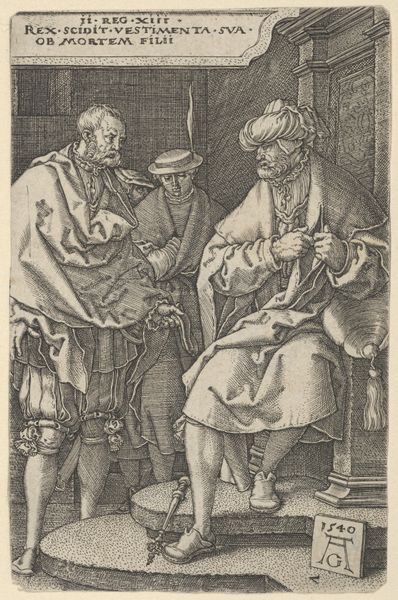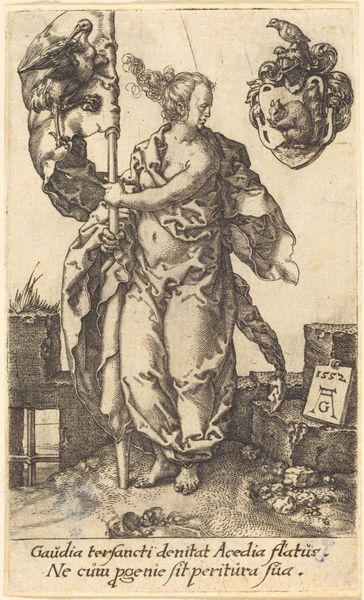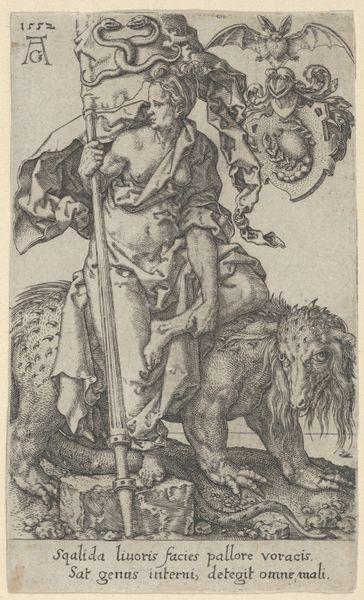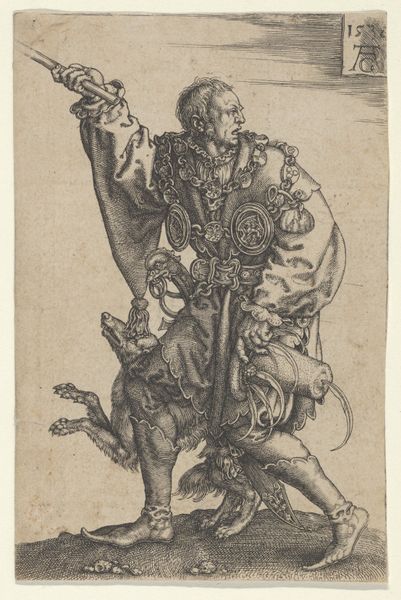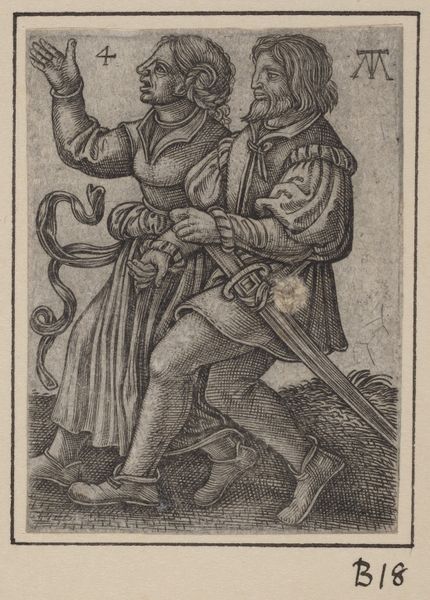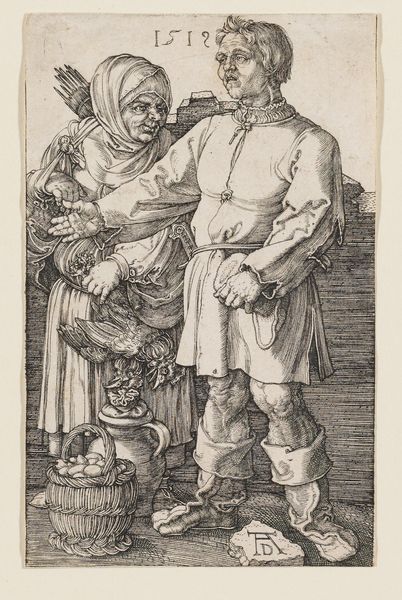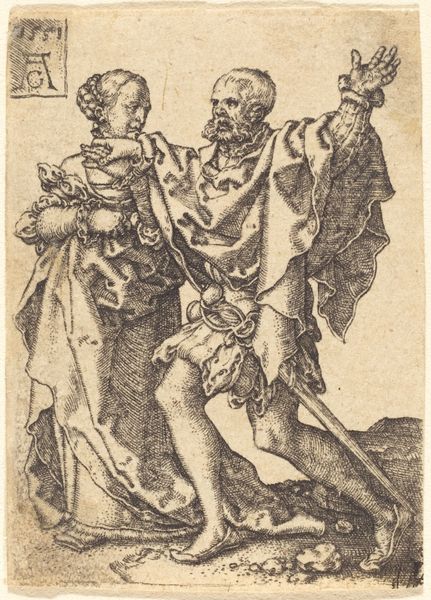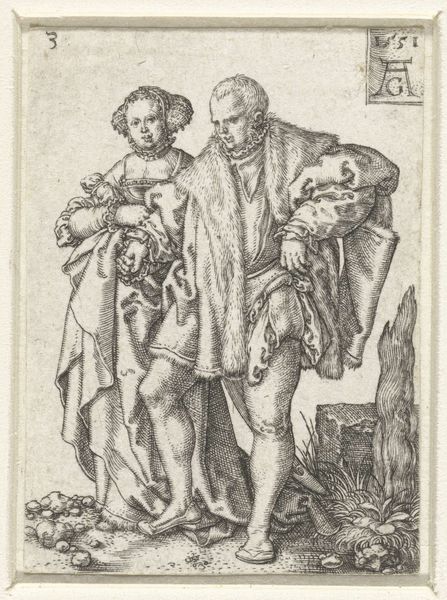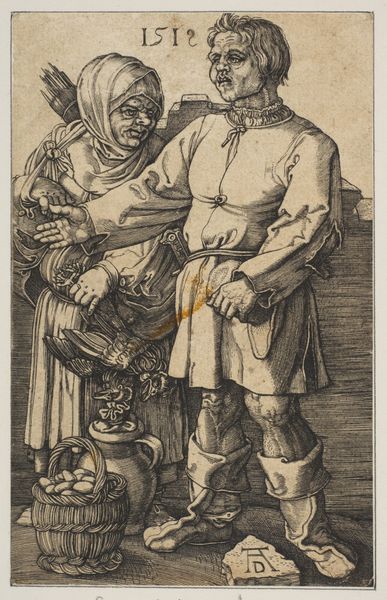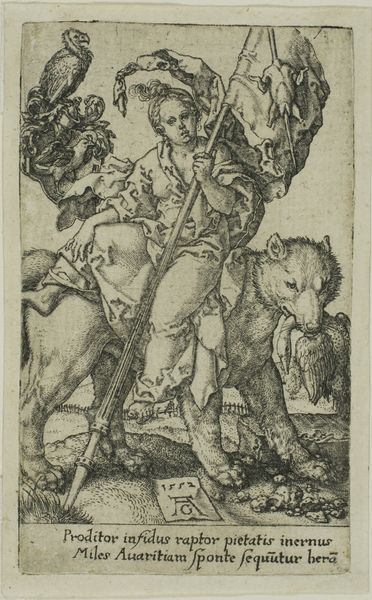
print, engraving
#
portrait
# print
#
figuration
#
history-painting
#
northern-renaissance
#
engraving
Copyright: National Gallery of Art: CC0 1.0
Heinrich Aldegrever made this print of a dancing couple sometime in the first half of the 16th century. The technique used was engraving, a process that involves using a tool called a burin to incise lines directly into a metal plate, which is then inked and printed. Consider the labor involved. Every line you see had to be carefully cut by hand. The depth and density of these lines create the tonal range, from light to shadow, giving the figures their three-dimensional form. The engraver’s skill is evident in the precise control of the burin, creating fine details like the folds of the clothing and the expressions on the dancers’ faces. The very nature of the engraved line—clean, precise, and repeatable—speaks to the rise of printmaking during this period, enabling the wider distribution of images and ideas, feeding into burgeoning markets and new forms of consumption. Engraving, like other forms of craft, was a highly skilled occupation, requiring years of training and practice. Aldegrever's expertise in this medium elevates the dancing couple from a simple scene to a sophisticated work of art. The materials, the making, and the context are all essential to appreciating its full meaning.
Comments
No comments
Be the first to comment and join the conversation on the ultimate creative platform.

